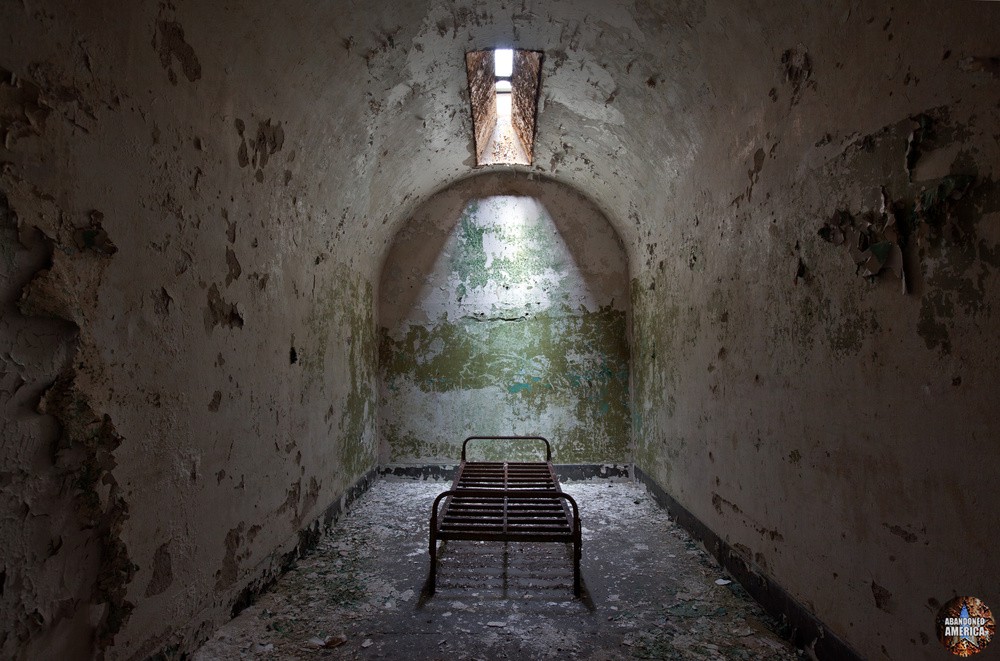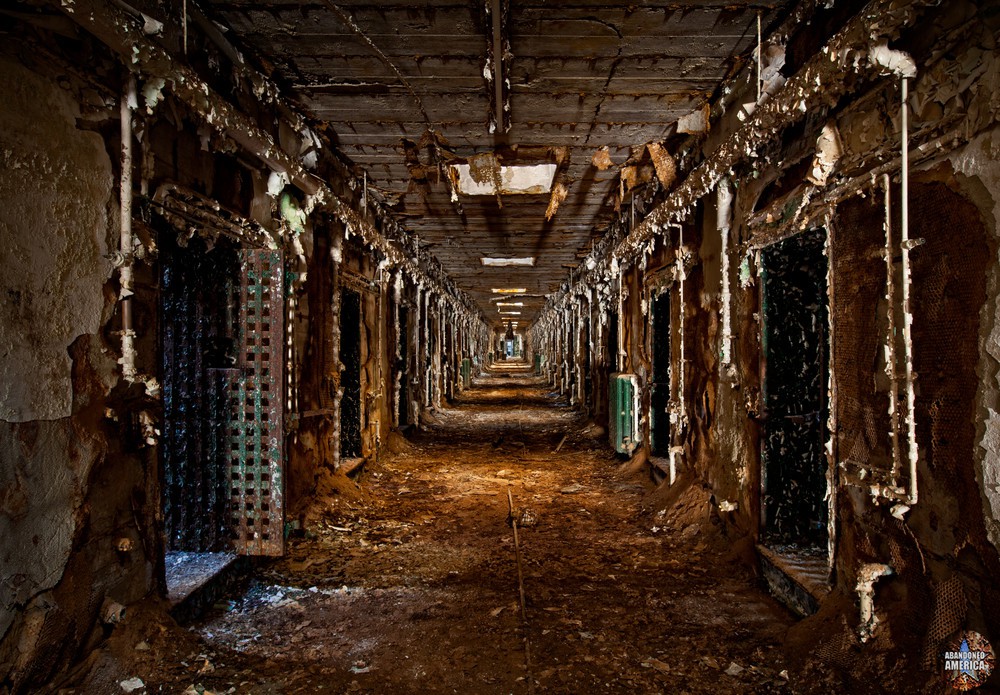Opened in 1896 to relieve overcrowding at Philadelphia’s Moyamensing Prison, Holmesburg Prison was closed in 1995, however inmate overflow and work programs continue to use parts of the facility occasionally. Prisons are not supposed to have happy histories, but Holmesburg’s history includes some incredibly horrific incidents of rape, torture, rioting, corruption, medical experimentation, and murder.
‘Separate penal imprisonment’ was the original concept, with inmates being left alone to think about their offenses. It was modeled after the adjacent Eastern State Penitentiary and had a spoke-and-wheel configuration. Light entered the cells through a small opening in the roof. The model was soon overwhelmed by overcrowding, and as early as 1928, riots broke out partly because there were three inmates per cell, which prompted the jail to expand.

Many of Holmesburg Prison’s cells bear a striking resemblance to Eastern State Penitentiary, which its design was loosely based on.
The response to disturbance was severe and quick. Reaction to a 1938 hunger strike, during which half the prison population refused to eat due to grievances about the food, was one of the most horrific events that took place at the institution. Twenty-five of the detainees who had been designated as striking leaders were brought to the Klondike, a small cell block with steam pipes and radiators lining it. When combined with an August heat wave, the closed windows and ventilation grills caused the building’s temperature to rise to almost 200 degrees. Four of the men perished from horrifying wounds that were consistent with being cooked alive and given violent beatings.
Over the years, there have been several killings and beatings, including one in 1973 in which prisoners fatally stabbed the warden and his deputy. A Bulletin report stated that some 100 prisoners “armed with meat cleavers, boning knives, makeshift pitchforks and table legs” sparked a riot in 1970, demolishing the dining hall and killing other prisoners and guards. The incident resulted in injuries to about 100 persons. Following a lawsuit that brought beatings, unclean facilities, and sexual assault to the public’s notice, certain improvements aimed at addressing overcrowding circumstances were implemented.
The two decades that Dr. Albert M. Kligman conducted a range of medical experiments on the inmates, exposing them to skin-blistering chemicals, radioactive isotopes, cosmetics, herpes, psychoactive drugs, and carcinogenic substances like dioxins, was another dark chapter in the history of Holmesburg. Thirty-three sponsors, including Dow Chemicals, Johnson & Johnson, and the U.S. Army, provided funding for the studies. Prisoners received meager compensation, inadequate risk counseling, and inadequate care for any resulting consequences.

One of the most decayed and eerie cell block in Holmesburg Prison in Philadelphia
Up to nine tenths of the inmate population are said to have participated in these experiments, which ran from 1951 until 1974. Following the experiments, there were lawsuits, public protest, and congressional hearings on the grounds that the experiments violated the Nuremburg Code. Although the lawsuits were dropped and the documents were erased, the use of inmates in medical research is now subject to stringent legislation.
Objectively speaking, Holmesburg Prison was undoubtedly a horrible place. Because it housed the worst of the worst convicts, it was known as “The Terrordome.” I shall miss it, though, if the city of Philadelphia ever gets around to demolishing it. It is a crucial indication of who we are, what we are capable of, and how alarmingly near we are to the darkest aspects of our own history, if nothing else.
